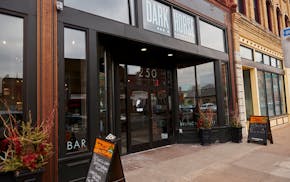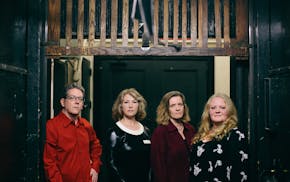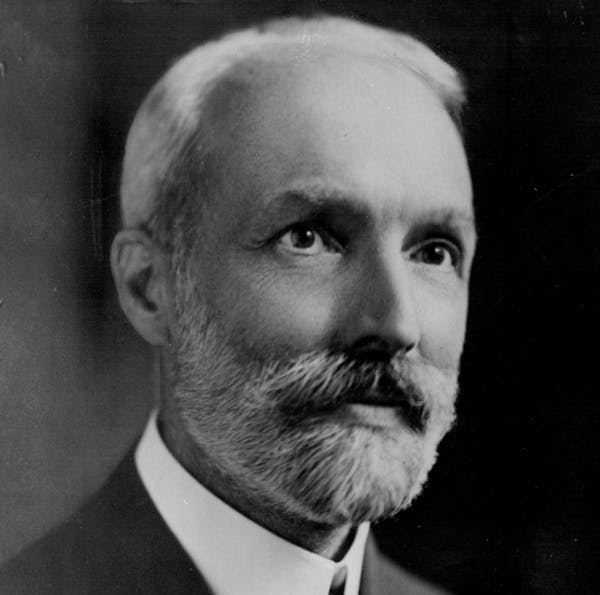I worry about Dayton's.
Correction, the Store Formerly Known as Dayton's.
My concerns aren't mercantile, they're architectural. Specifically, the pair of mammoth, mismatched facades that stretch a full block on Nicollet Mall and constitute the Dayton's flagship store.
They form one of the city's most enduring landmarks, and although the name on the door has read "Macy's" for the past nine years, for many Minneapolitans — present company included — 700 Nicollet will forever be "Dayton's."
Generations of Minnesotans turned to Dayton's not only to fill their closets and furnish their homes, but to discover the world's latest and greatest. Like most 20th-century downtown department stores, Dayton's was more than a one-stop shopping destination. It was a civilizing force, a social and cultural nexus, an idea factory, a memory maker, the heart of the city, a way of life.
Few local addresses can boast the building's single-purpose longevity; it has served as a department store for 113 years. Teddy Roosevelt was in the White House when the 7th Street building went up. The 8th Street side of the store attained its current appearance shortly after the end of World War II.
From the sidewalk, the store's familiar but immense physical presence makes it tough to ignore. It hits 12 stories at its peak (and sinks two floors below the sidewalk), and its total floor space could fill roughly two-thirds of the IDS Tower.
Investors have been pressing Macy's to boost its sluggish bottom line by cashing in on some of the company's real estate holdings. From the outside looking in, it appears as if 700 Nicollet has a big target on its back.
That's because Macy's only occupies roughly half the building. The rest has sat, unused — a presumably expensive drag on the company's balance sheet — since the retailer laid off nearly 950 office workers in 2009. Since then, Macy's has put out feelers to convert those empty floors to leasable space, but no takers have emerged.
Nationally, Macy's record on use and re-use of its extensive real estate holdings has been mixed. The company recently closed several once-imperious downtown stores. Their fate? Demolition (Houston), proposed re-use (Pittsburgh) and empty (St. Louis).
Portland and Seattle
A happier example can be found in Seattle, where the upper floors of the former Bon Marche, a 1929 beauty, are being converted to office space while Macy's continues to operate a store on the building's lower floors. It's the same story at the former Abraham & Straus in downtown Brooklyn.
Perhaps the most encouraging role model looms over Pioneer Courthouse Square in Portland, Ore., where the former Meier & Frank, a 15-story glazed terra cotta stunner, is now a Macy's and a busy 331-room luxury hotel, the Nines.
The Twin Cities boasts several sterling examples of department store adaptive reuse, although the renovations happened after the original stores closed.
In Minneapolis, elegant Young Quinlan is now a mix of retail and offices, as are the city's short-lived Neiman Marcus and Saks Fifth Avenue stores in Gaviidae Common, and the former Donaldsons in dreary City Center.
In St. Paul, the stately Golden Rule (designed by prolific Minnesota architect Clarence Johnston) has been an office building for 30 years. Across Robert Street, the Emporium, hiding under a reflective glass facade, is Metro Square, an office building.
There's even good news coming out of Macy's cheerless St. Paul branch, dark since 2013. Now owned by the city's Port Authority, there's a proposal to convert the 52-year-old monolith into a practice facility for the NHL's Minnesota Wild, plus space for retail and restaurants.
Meanwhile, back at 700 Nicollet, Macy's isn't revealing its plans, at least not yet.
"We don't have anything to confirm or report at this time," said Jacqueline King, media relations manager for Macy's North Central division.
Investing in downtown
With more than 800 stores in 45 states, the Macy's empire, with annual sales of $28 billion, was forged largely through the acquisition of regional department store chains. It picked up the former Dayton's — by that point, it was Marshall Field's — 10 years ago.
Macy's is a mostly suburban retailer, a reflection of the endangered species that is the downtown department store. Still, more than a dozen American central business districts feature a Macy's. To the company's credit, it's making significant investments in several of its urban locations.
In New York City, a multiyear, $400 million remake of the chain's Herald Square flagship — the nation's largest department store — is nearly half complete. Macy's Los Angeles outlet is being upgraded as part of a $180 million revamp of the surrounding shopping/entertainment complex.
But Dayton's Minneapolis? It doesn't take a brain surgeon to see that store's pulse has slowed considerably since its conversion to Macy's. The last serious investment made in the building was more than a decade ago, a $15 million renovation undertaken during the brief period when the store was owned by May Department Stores Co.
Please, Macy's, tread carefully. It may be a dwindled shell of its former self, but as Nicollet Mall's sole department store, it's all the city has. Treat our Dayton's with the respect it deserves. Downtown's vitality depends upon it.
Follow Rick Nelson on Twitter: @RickNelsonStrib

The 5 best things our food writers ate this week

A Minnesota field guide to snow shovels: Which one's best?

Summer Camp Guide: Find your best ones here

Lowertown St. Paul losing another restaurant as Dark Horse announces closing





